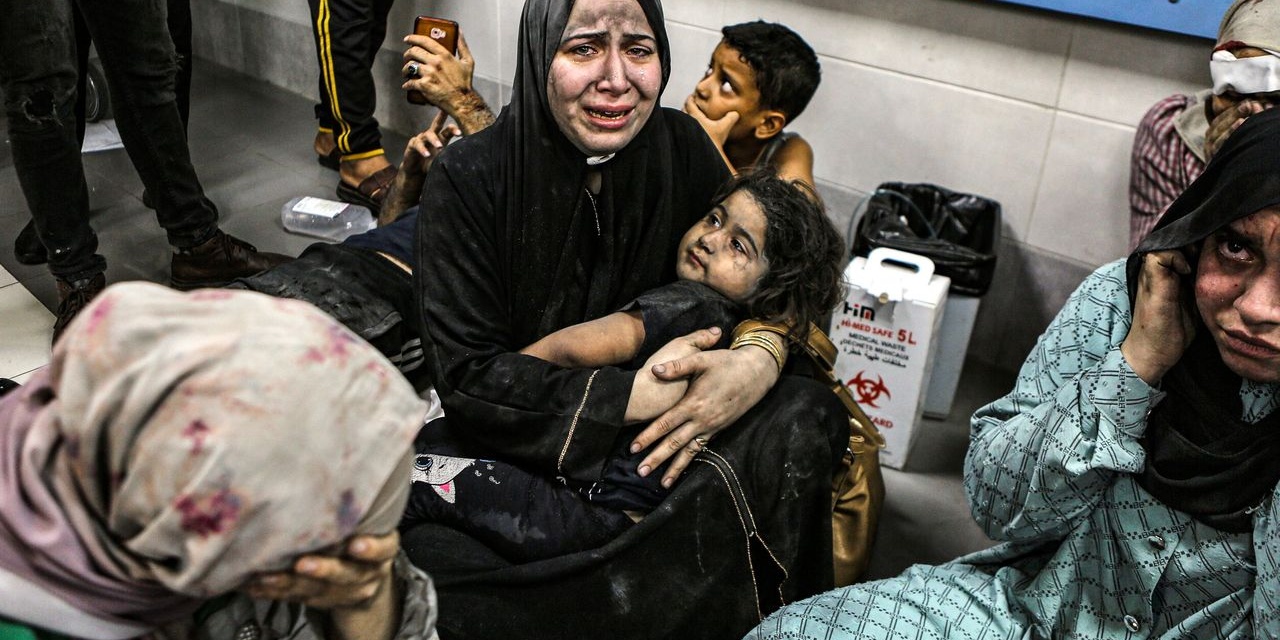Wounded at the al-Shifa hospital in Gaza City (Abed Khaled/AP)
Originally published by the Irish Independent:
Our moral compasses are malfunctioning amidst the onslaught of graphic images spilling unfiltered onto the Internet and social media. Will our capacities to look, understand and
respond to images ever catch up with the digital deluge?
The photograph shows a dead, blood-stained infant, dressed in a baby grow and nappy, laid on a plastic sheet, its face blurred out.
It was posted on Twitter on October 13 by the Israeli Foreign Ministry with the comment, “We went back and forth about posting this, but we need each and every one of you to know. This happened.”
The shocking image was quickly reproduced across global news and social media, its meaning digested and contested as it surfed and then drowned in the swell of misinformation and disinformation surrounding the conflict between Israel and Hamas. As more pictures of dead children were produced and claims about the beheadings of children went viral, it became almost impossible to separate fact from fiction.
Speaking to a group of Jewish leaders at the White House on October 11, President Joe Biden said: “I never really thought that I would see, have confirmed, pictures of terrorists beheading children.” The White House later “clarified” that Biden had not seen such pictures and was basing his comments on Israeli media and government reports.
As Israeli authorities shared graphic pictures of the Hamas attack with Western leaders, some strained to validate their import. “Images are worth a thousand words. These images may be worth a million,” observed US Secretary of State Anthony Blinken in Tel Aviv on October 12. It was a curious rhetorical effort to inflate the significance of these particular images, underlining rather than transcending the lack of belief in what we see in this divisive
digital age.
The horrifying, graphic images from the Israel-Hamas conflict add to our growing uncertainty about the calculus of human suffering, overwhelming our senses and our capacity to empathize or understand what we are looking at.
In the mid-1970s, in the analogue age, Susan Sontag argued that photography teaches us an “ethics of seeing” since “photographs alter and enlarge our notions of what is worth looking at and what we have a right to observe”.
Today, in the digital age, that ethical imperative is compromised by the unfiltered ubiquity of images, calling into question the power of photography to move or motivate us.
Read Full Article at the Irish Independent

The bodies of victims following the Hamas attack on Kibbutz Kfar Aza in southern Israel, October 7, 2023 (Reuters)


Trackbacks/Pingbacks